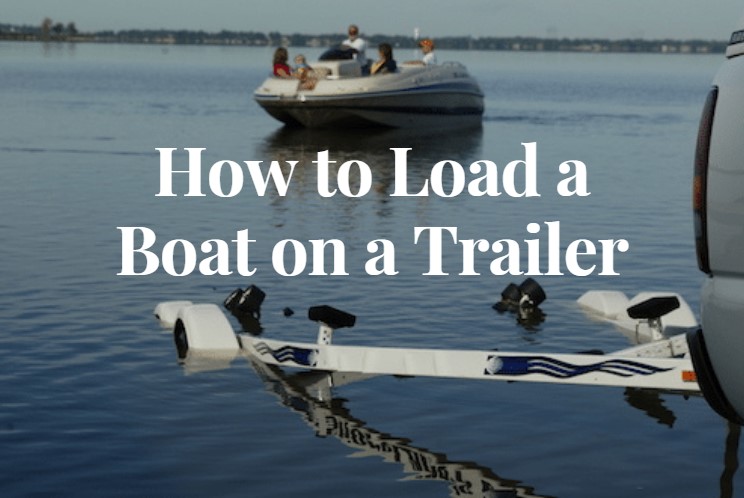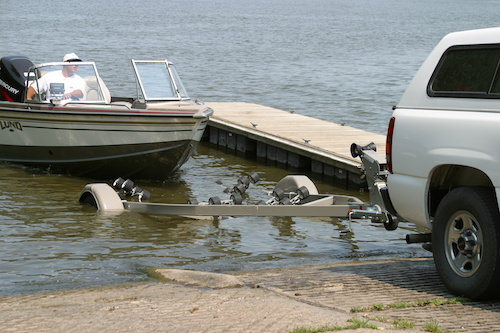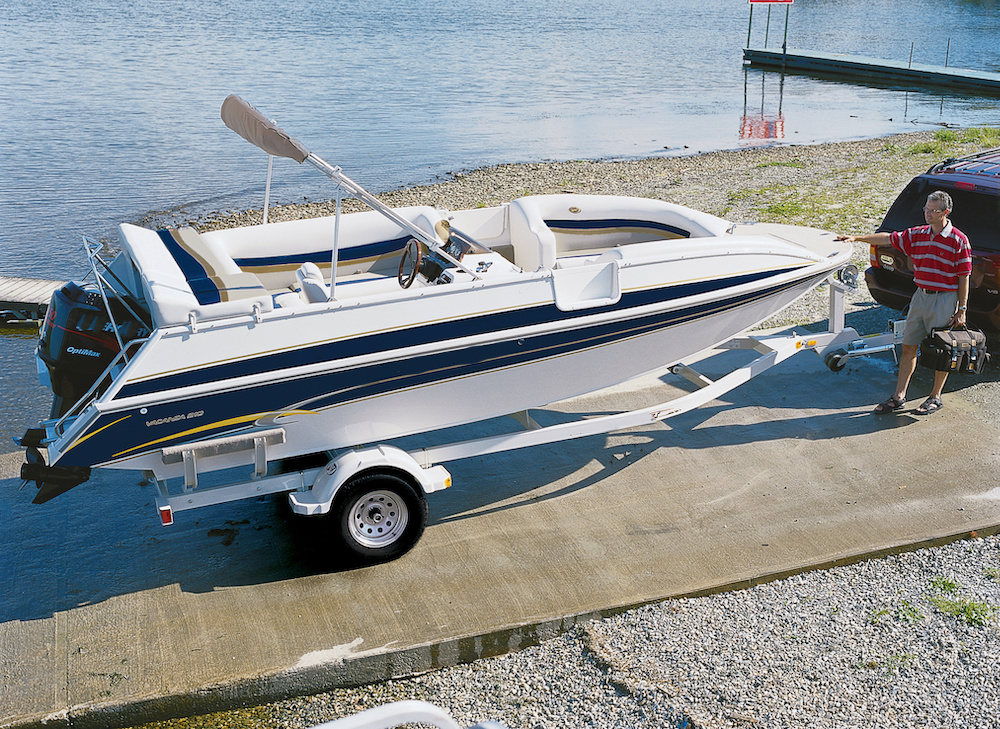
The perfect ending for a day on the water starts with a stress-free retrieval of your boat—which includes successfully loading it back on its trailer for a safe trip home. Here are some simple step-by-step instructions for navigating that process. By DiscoverBoating.com.

- Start by idling up to the launch-ramp dock, and putting your vehicle driver and crew ashore. While they walk up to the parking lot and prepare to back down the ramp, you can idle and wait out of the way.
- When you see your tow vehicle backing down the ramp, get the boat in position.
- The driver should put the vehicle Park and set the parking brake.
- Your driver can now be ready to hop on the trailer tongue or step into the water to help secure the boat on the trailer.
- The trailer should be backed into the water as straight as possible, and at a depth that allows the boat to float over the rear two-thirds of the trailer bunks.
- Now, you can idle the boat over the bunks, aligning the bow peak with the trailer bow stop.
- If the ramp is shallow you may need to trim your outboard motor or sterndrive up a bit so the prop doesn’t hit bottom.
- When the boat bumps the bow stop on the winch post, or gets close, your helper can clip the winch strap to the bow eye, and use the winch to pull the boat up snug to the winch post, and then secure the safety chain.
- If the boat ends up a little crooked on the trailer, try backing down the ramp just a little to allow the boat to float and center itself. Now tilt the motor or drive up, and the vehicle driver can slowly pull the boat and trailer up the ramp.
- Just as when launching, you’ll want to pull your rig out of the way of ramp activity to unload gear and prepare the trailer and boat for the highway.
Finding the Right Position on Your Trailer
If the boat stays afloat all the way to the trailer bow stop, you’ve backed the trailer too far down the ramp. If the boat only floats onto the back third of the trailer, you’re shallow and need to back the trailer in a little deeper. Once you figure out just the right depth, make a note of where the waterline falls on the trailer wheels or fenders, and you’ll always know about where to stop the trailer.
If your trailer is positioned properly, it should take minimal power to push the boat up to the winch post. Don’t “power load” the trailer with a lot of engine throttle—your prop thrust will blow away the bottom behind your boat and deteriorate the ramp.

Boat Ramp Etiquette
As you complete this entire process, remember that idling out of the way of the ramp leaves dock space available for other boaters to utilize while you wait; however, if the ramp area is very quiet, then it’s okay to tie up at the dock at your favorite lake.
Likewise, it’s important to note that you’ll want to clear weeds from the trailer and drain your boat at the ramp to prevent the spread of invasive species—this is often required by law. Simply pull the hull drain plug and also drain live or bait wells. While they drain you can secure the transom straps, install an outboard “transom saver” if you use one.
Finally, be sure to clear the boat of any loose gear that could blow out on the highway. Before you hit the road, check your tire pressure and the trailer lights, and double check that the trailer coupler is secure on the hitch.
How to Load a Boat on a Trailer By Yourself
Your strategy for retrieving and loading the boat by yourself will depend on the size of the boat; with a bigger boat you may not be able to reach the bow eye from inside the boat.
The following is a simple method that works with any boat:
- Tie up your boat to the dock.
- Then attach a single long line to the bow and stern cleat.
- Back the trailer down deep enough that you can float the boat most of the way onto the trailer.
- Using the line you can control the boat as you walk down the dock.
- Once the boat is over the trailer, hop down and use the winch to pull it all the way to the stop.
How to Load a Boat on a Roller Trailer
If your trailer supports the boat with rollers rather than bunks, a good strategy is to…
- Back the trailer down just until the back rollers are under water.
- Then drive the boat onto the trailer.
- If it won’t go all the way to the winch post, clip on the winch strap and winch the boat the rest of the way.
- If the ramp is steep you may need to leave the engine in gear at idle to prevent the boat from rolling back off the trailer.
- In a smaller boat with a side console, it may help to stand as close as possible to the center of the boat while loading, which will help the boat self-center on the trailer.
A roller trailer is great for launching and loading at very shallow or unimproved ramps with no dock, as you can easily winch the boat onto the trailer.
Loading a Boat on a Trailer in the Wind
A cross wind or current can complicate the loading process, so there’s some additional precautions you’ll want to keep in mind.
- Watch other boats load to gauge the situation.
- You may want to approach the trailer upwind so that when you reach the trailer you’re lined up with the bunks.
- In this case, it helps to use a little more power to quickly secure the boat on the trailer bunks before the wind or current gets you crossed up.
Reposted by Scott Freerksen “The Lake Guy”
